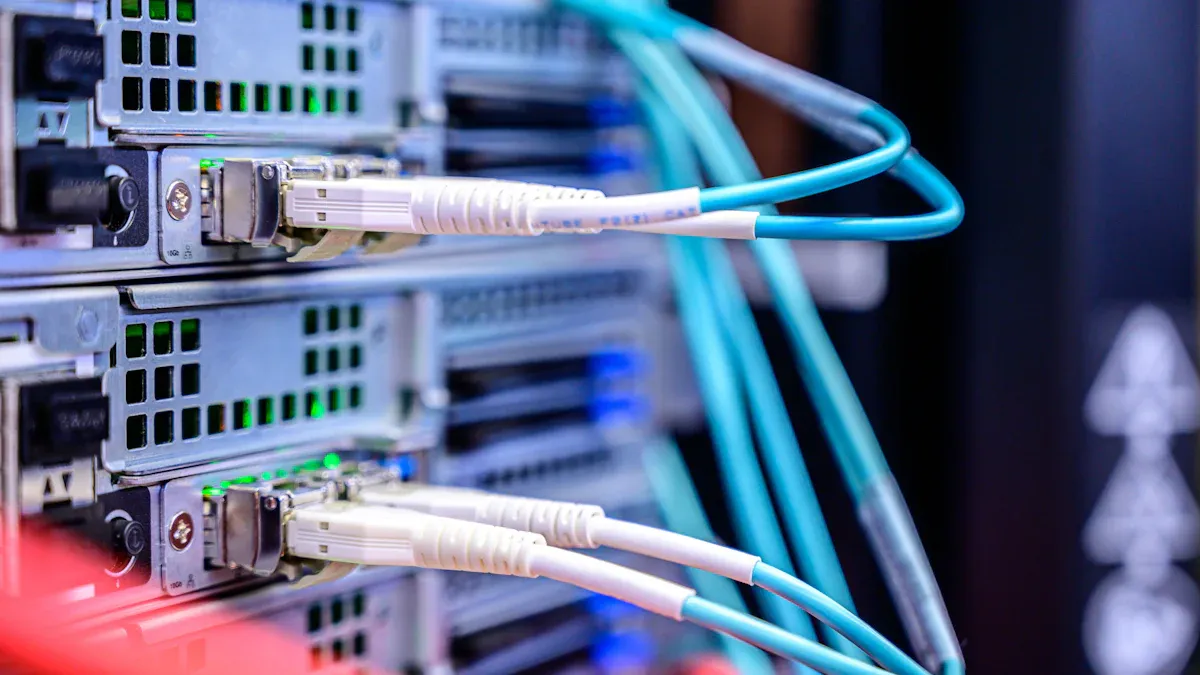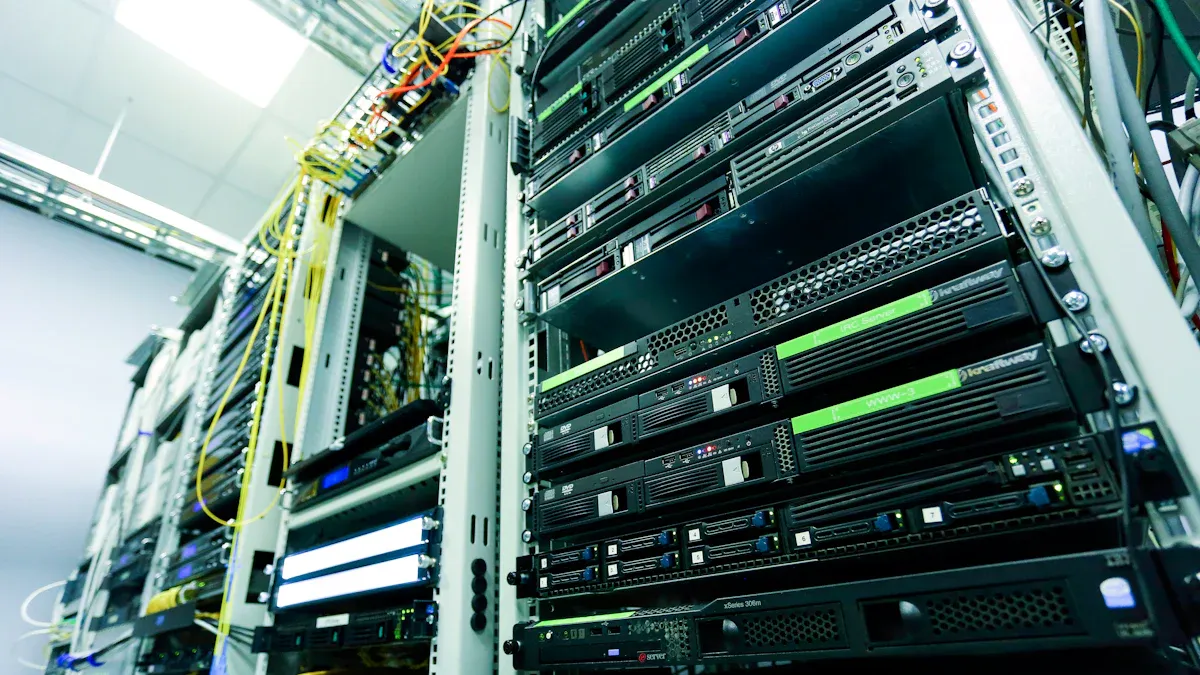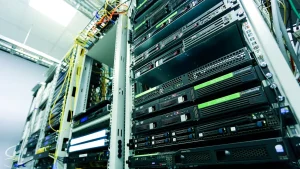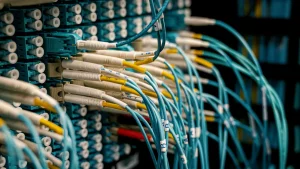
A PDU serves high-demand environments with features like advanced monitoring, real-time load balancing, and compliance with safety standards. Technical testing shows that a Basic PDU withstands more stress than a standard power strip. An Intelligent PDU also offers remote switching and energy tracking for reliable, secure power distribution.
Key Takeaways
- PDUs handle higher power loads and offer advanced features like remote monitoring, load balancing, and safety sensors, making them ideal for data centers and critical environments.
- Ordinary power strips are affordable and convenient for everyday use in homes and offices but lack the advanced control and safety features of PDUs.
- Choose a PDU when you need reliable, secure power management for high-demand equipment; select a power strip for simple, low-load needs.
What Is a PDU?

Definition
A Power Distribution Unit, or PDU, is a specialized device that distributes electrical power to multiple devices within a rack or enclosure. Companies use PDUs in environments where reliable and efficient power management is critical. Unlike basic power strips, a PDU supports higher loads and advanced control features. Certified models meet global safety standards such as UL, CE, and RoHS, making them suitable for regulated industries.
Key Features
PDUs offer a range of advanced features that set them apart from ordinary power strips. The table below highlights these features and their benefits:
| Feature Category | Description | Benefits Compared to Ordinary Power Strips |
|---|---|---|
| Types of PDUs | Basic PDUs provide simple power distribution; Smart PDUs include monitored and switched types with advanced controls. | Smart PDUs enable remote monitoring, management, and control of power usage. |
| Monitoring Capabilities | Outlet-level and unit-level monitoring with real-time data and alerts on power consumption and thresholds. | Enables proactive management and reduces downtime, unlike ordinary strips. |
| Remote Control | Switched PDUs allow remote on/off/reboot of individual outlets. | Facilitates quick power cycling and remote management, not possible with strips. |
| Environmental Sensors | Integrated sensors monitor heat, moisture, and other conditions within the rack. | Prevents equipment damage by environmental monitoring, absent in strips. |
| Reliability Features | High temperature operation ratings and rigorous manufacturer testing ensure dependable performance. | Supports higher density and temperature environments better than strips. |
Smart PDUs also support communication protocols like SNMP and HTTP, allowing integration with network management systems. Rotatable LCD screens display voltage and current, making monitoring easy. Customizable power sequencing helps prevent power surges during startup.
Typical Applications
- Data centers use PDUs to manage power for servers and networking equipment.
- Industrial facilities rely on PDUs for automation and high-density power needs.
- Telecom and IT sectors deploy PDUs to ensure uptime and remote management.
- Healthcare, retail, and education sectors use PDUs for reliable power distribution in critical areas.
Intelligent PDUs are common in environments that require energy efficiency, remote monitoring, and compliance with strict safety standards. Data centers, especially in North America and Asia Pacific, lead in PDU adoption due to high equipment density and the need for operational efficiency.
What Is an Ordinary Power Strip?
Definition
An ordinary power strip is a portable device that expands a single electrical outlet into several sockets. Manufacturers design these strips for general use in homes, offices, and light commercial settings. Technical glossaries and datasheets classify power strips under several categories, each with specific standards and intended uses. The table below summarizes these types and their defining features:
| Power Strip Type | Applicable UL Standard(s) | Applicable CSA Standard(s) | Key Defining Features and Usage |
|---|---|---|---|
| Furniture Power Distribution Units (FPDU) | UL 962A | CSA-C22.2 No. 308 | Rated ≤250 V AC, ≤20 A AC, intended for indoor use attached to furniture; may include surge suppression, EMI filters, USB charging, LED lighting, and other integrated features. Must comply with UL 498 for receptacles. |
| Multioutlet Assemblies | UL 111 | CSA-C22.2 No. 62, No. 62.1, No. 42, No. 0 | Intended for installation per NEC Article 380; includes surface raceway systems and general use receptacles; certification ensures code compliance. |
| Relocatable Power Taps (RPT) | UL 1363 | CSA-C22.2 No. 308 | Portable power taps designed for relocation; subject to specific UL and CSA standards for safety and performance. |
Key Features
Ordinary power strips offer a range of features that enhance convenience and safety for everyday users:
- Protection Features:
- Circuit breakers trip during overloads to prevent damage.
- Fuses cut power if voltage remains too high.
- Thermal sensors detect overheating.
- EMI/RFI filters reduce electrical noise.
- Surge suppression protects against voltage spikes.
- Configuration Features:
- Battery backup provides temporary power during outages.
- AC adapter spacing fits bulky plugs.
- On/off switch controls all outlets at once.
- Twist-lock plugs prevent accidental unplugging.
- Some models include remote control functions.
- Additional Features:
- USB charging ports for mobile devices.
- Higher amp ratings for demanding equipment.
- Antimicrobial coatings for healthcare use.
- GFCI plugs for wet environments.
Typical Applications
Ordinary power strips see widespread use in homes, offices, and commercial spaces. Market analyses show that in 2020, these devices made up over 57% of global sales, mainly serving residential users. People rely on power strips to connect televisions, lamps, laptops, and other electronics when outlets are limited. During the COVID-19 pandemic, remote work and online learning increased demand for power strips in households. Offices and retail stores use power strips to power computers, printers, and other equipment, accounting for 53% of commercial market share in 2023. Industrial settings also use rugged power strips for tools and machinery, with this segment growing rapidly. These trends highlight the essential role of ordinary power strips in modern life.
PDU vs. Power Strip: Key Differences

Load Capacity
PDUs and power strips differ greatly in how much electrical load they can handle. A PDU supports high load capacity, often reaching several kilowatts. This makes it suitable for powering many servers or heavy equipment in data centers and industrial settings. In contrast, a typical power strip supports a much lower load, usually less than 1.8 kW. This limit works for home electronics or small office devices but not for high-demand environments.
| Device Type | Load Capacity |
|---|---|
| Power Distribution Unit (PDU) | High load, up to several kilowatts |
| Power Strip | Low load, usually under 1.8 kW |
A PDU also offers advanced load management. Intelligent models can monitor and control power at each outlet. They provide real-time data on voltage, current, and power factor. This helps prevent overloads and allows for efficient power use. Ordinary power strips do not have these features and cannot manage high loads safely.
Safety Features
Safety is a key difference between PDUs and power strips. PDUs meet strict safety standards and often include features like circuit breakers, surge protection, and temperature monitoring. These features protect sensitive equipment from electrical faults and overheating. Some PDUs also have environmental sensors that detect heat or moisture inside racks.
Power strips offer basic safety features such as circuit breakers and surge protection. They protect against simple overloads and voltage spikes. However, they lack the advanced safety systems found in PDUs. For example, most power strips do not monitor temperature or provide alerts for unsafe conditions. In critical environments, a PDU offers much better protection.
Tip: For mission-critical systems, always choose a PDU with advanced safety features to reduce the risk of downtime.
Monitoring and Control
PDUs stand out for their monitoring and control capabilities. Basic PDUs act like power strips, only distributing power. Metered PDUs add local displays for voltage and current. Monitored PDUs allow remote access to power data. Switched PDUs go further by letting users turn outlets on or off remotely. Some models combine all these features, offering full control and monitoring at the outlet level.
- Non-intelligent PDUs:
- Basic PDUs: No monitoring or remote control.
- Monitored PDUs: Local display only.
- Intelligent PDUs:
- Metered input PDUs: Local and network metering.
- Metered outlet PDUs: Outlet-level metering with network access.
- Switched PDUs: Remote on/off control of outlets.
- Switched PDUs with outlet metering: All features combined.
Power strips do not offer these advanced functions. Most have only a simple on/off switch for all outlets. They cannot monitor power use or allow remote control. This makes PDUs the better choice for environments where uptime and energy management matter.
Build Quality and Durability
PDUs use high-quality materials and robust construction. Manufacturers design them to withstand harsh conditions, such as high temperatures and heavy use in server rooms or factories. Many PDUs pass rigorous tests for durability and reliability. They often include metal housings and reinforced components.
Power strips, on the other hand, are built for light-duty use. Most use plastic housings and basic wiring. They work well in homes and offices but may fail under heavy loads or in demanding environments. Over time, power strips can wear out or become unsafe if used beyond their rated capacity.
Price and Cost
PDUs cost more than ordinary power strips. The higher price comes from advanced features like remote monitoring, outlet-level control, and strong safety systems. Market research shows that the PDU market reached $4.21 billion in 2023 and continues to grow as more businesses invest in reliable power solutions. Intelligent PDUs have the highest upfront costs, but they can lower operational expenses by reducing downtime and improving energy management.
Power strips remain affordable and widely available. They meet the needs of most homes and small offices. However, they do not offer the same level of protection or control as a PDU. For critical applications, the extra investment in a PDU often pays off in reliability and safety.
How to Choose Between a PDU and a Power Strip
Assessing Power Requirements
Choosing the right device starts with understanding power needs. Users should:
- Check the power consumption of each device in watts or volt-amperes, usually found on labels or in manuals.
- Add up the total power needed and make sure the power source can handle it.
- Identify if the setup uses single-phase or three-phase power. Homes and small offices often use single-phase, while large facilities may need three-phase.
- Plan for future growth by selecting equipment with extra capacity and outlets.
- Consider mounting options, such as horizontal or vertical, to fit the available space.
Advanced PDUs offer real-time monitoring, remote control, and load balancing. These features help prevent overloads and improve efficiency.
Considering the Environment
The environment plays a big role in the decision. Intelligent PDUs monitor power, temperature, and humidity at each outlet. This helps optimize cooling and reduce wasted energy. Basic power strips do not provide this level of control. Data centers and large offices benefit from PDUs that support energy-saving goals and sustainability. Technology PDUs can lower energy waste by up to 30% and support integration with renewable energy systems.
Safety and Compliance Needs
Safety and compliance are critical. Look for certification marks like ETL or GS to confirm product safety. Product directories and recall notifications help verify compliance. In hazardous areas, regulations such as the ATEX Directive require risk assessments and certified equipment. These steps ensure safe operation and meet legal standards.
Budget Considerations
Budget affects the final choice. Power strips cost less and work well for simple needs. PDUs cost more but offer advanced features and long-term savings by reducing downtime and energy costs. Users should balance upfront costs with the benefits of reliability and safety.
The table below shows how a PDU meets the needs of data centers and critical environments, while power strips work best for homes and offices.
| Feature | Power Strip | PDU |
|---|---|---|
| Use | General | IT/data center |
| Safety | Basic | Advanced |
| Monitoring | None | Remote, detailed |
Choose a PDU for high-demand, mission-critical tasks. Select a power strip for light, everyday use.
FAQ
What is the main reason to choose a PDU over a power strip?
A PDU offers higher load capacity, advanced monitoring, and better safety. Data centers and industrial environments benefit most from these features.
Can a power strip replace a PDU in a server rack?
A power strip cannot replace a PDU in a server rack. PDUs provide essential features like load balancing and remote monitoring that power strips lack.
Do PDUs protect equipment from power surges?
Most PDUs include surge protection. Always check the product specifications to confirm this feature before installation.



